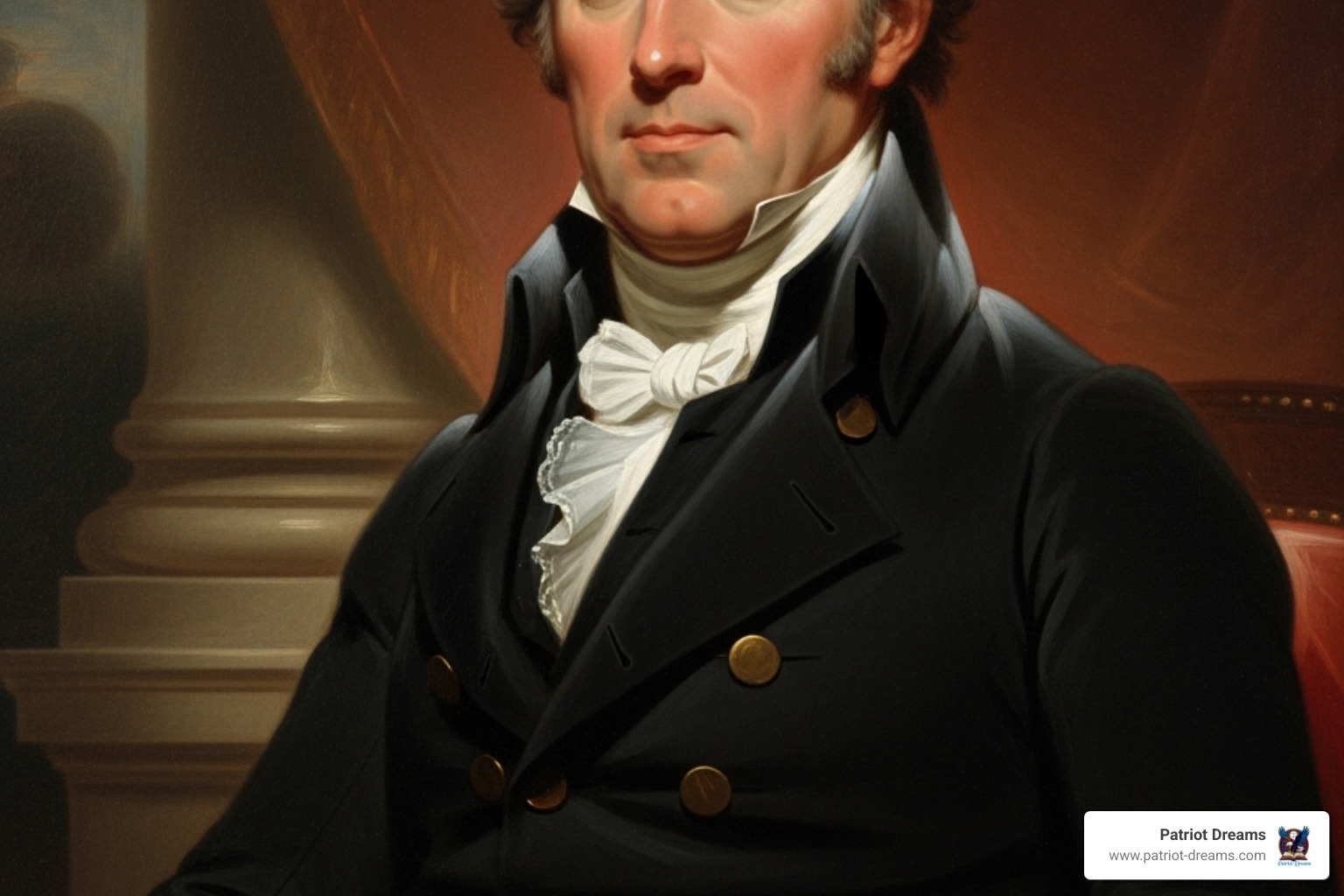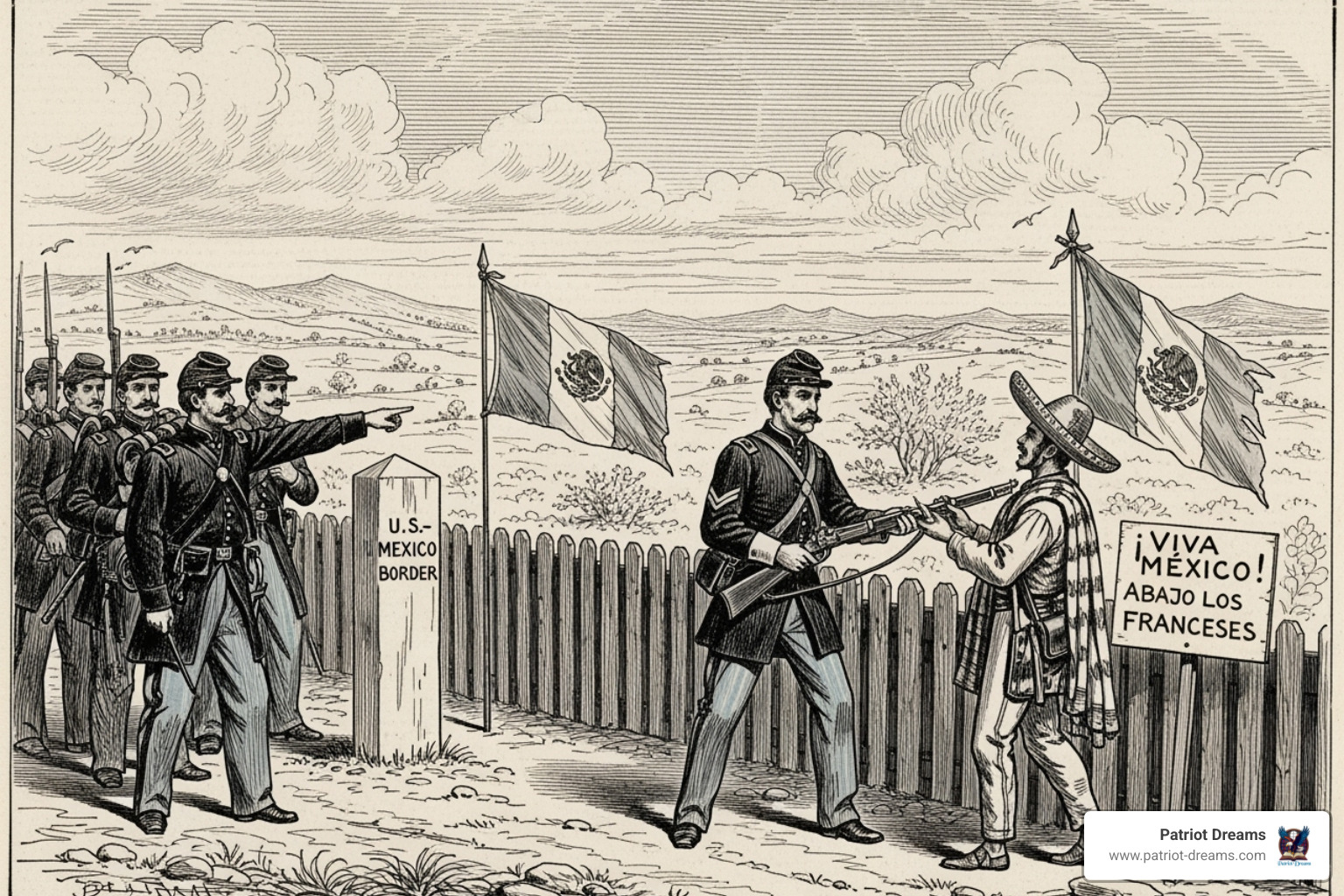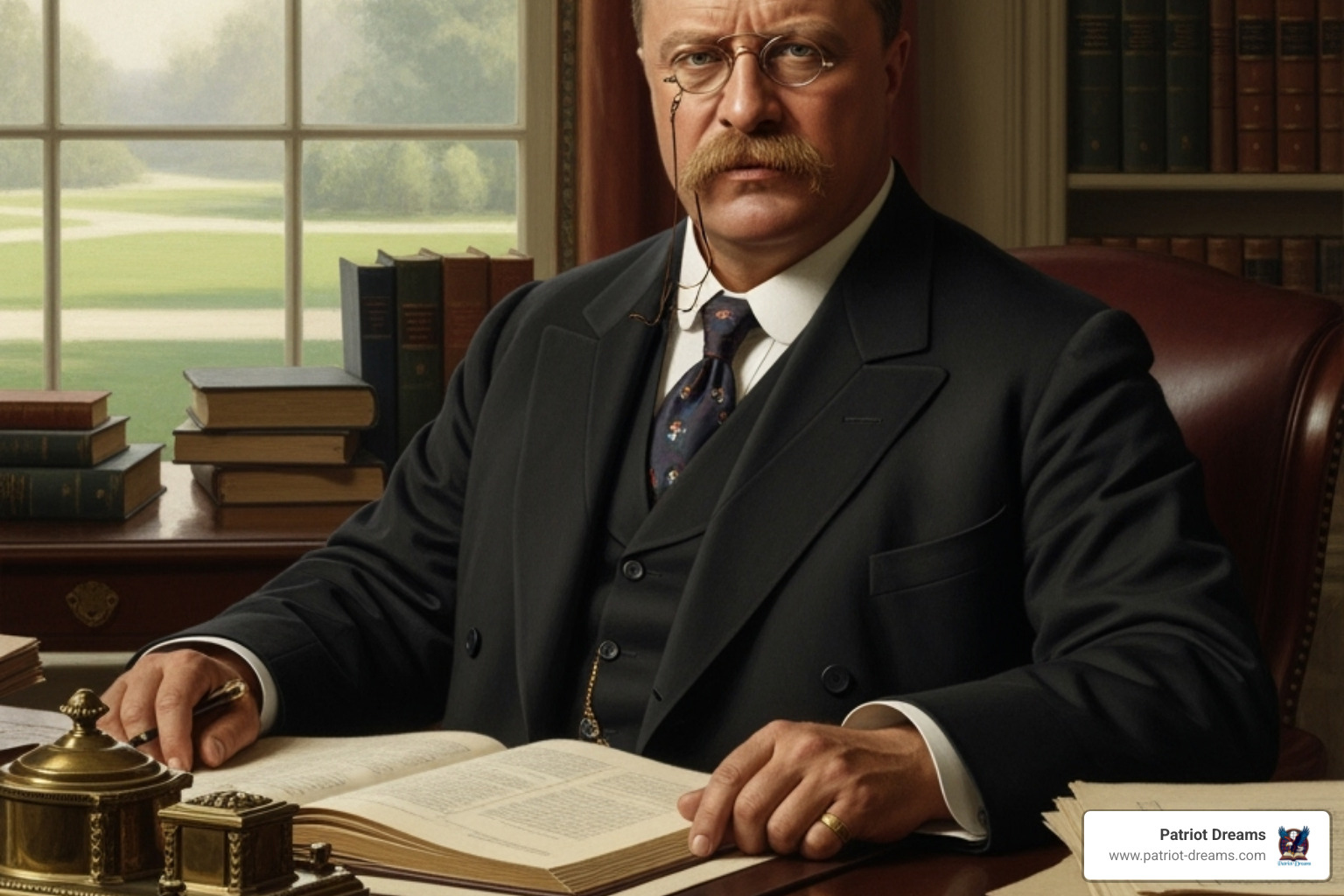Unpacking the Monroe Doctrine: What It Meant for America


A Promise to a Hemisphere
The Monroe Doctrine was a bold statement made by President James Monroe in 1823. In his annual message to Congress, he declared that the American continents were no longer open to European colonization and that any attempt by European nations to interfere in the Americas would be seen as a threat to U.S. peace and safety.
The doctrine rested on two main principles: non-colonization, meaning European nations should not create new colonies in the Americas, and non-intervention, meaning the U.S. would stay out of European affairs, and Europe should stay out of the affairs of independent nations in the Western Hemisphere.
Imagine a young nation, barely fifty years old, standing up to the great empires of Europe. That's what America did. At the time, many Latin American countries were breaking free from Spanish rule, and there was worry in Washington that European powers might try to reclaim these lands. Monroe's message was simple but powerful: The Americas belong to the people who live here. It was about standing with neighbors who were building their own dreams of freedom.
This declaration didn't make America powerful overnight. European leaders barely noticed it at first. But it planted a seed—a promise that would grow and change over two centuries, shaping America's role in the world.

A World of Change: Why America Spoke Up
Picture the world in 1823. Our nation was still young, but we were watching something remarkable unfold in our own neighborhood. Across Latin America, led by heroes like Simón Bolívar, people were rising up and declaring their independence from centuries of Spanish rule. The United States proudly recognized their sovereignty in 1822. These were our neighbors, and we wanted to see them succeed.

But this celebration came with worry. There was a real fear of European intervention. Powerful nations like Spain and France were making noises about restoring the old colonial order. At the same time, Russian expansion southward from Alaska toward the Oregon Territory raised concerns. It felt like the old world was circling, looking for opportunities on American soil.
Into this tense situation, British Foreign Minister George Canning proposed a joint declaration forbidding future colonization in Latin America. It seemed like a wise partnership. But Secretary of State John Quincy Adams saw things differently. He believed America should speak with its own voice, not hide behind Britain's powerful navy. Adams's passionate arguments for American self-reliance won the day, leading to the unilateral Monroe Doctrine.
This protective stance drew a friendly but firm line, creating two spheres of influence—one for the Americas and one for Europe. The doctrine's principles were clear: no new European colonies (non-colonization) and no interference with the new, independent Latin American nations (non-intervention). In return, the United States promised not to meddle in European affairs. It was a message of peace and safety built on mutual respect. You can explore more about how these foundational moments shaped our national character at More info about American history.
When President Monroe delivered his message, it didn't make headlines in Europe. The great powers largely disregarded it at first. After all, our young nation's bold words weren't backed by a mighty military. Yet, while Britain never officially endorsed the doctrine, the British Royal Navy effectively helped enforce it. Britain had its own trade interests in keeping other European powers out of the Americas, so its tacit approval served as an unintended guardian of Monroe's vision. The quiet statement planted a seed for the future, an echo that would grow impossible to ignore.
The Monroe Doctrine in Action
For decades, the Monroe Doctrine was more a vision than a force. But as our nation grew, those words from 1823 began to carry real weight, changing from a promise into a guiding principle.
One of its first great tests came while America was torn apart by its own Civil War. France saw an opportunity and, in 1862, installed a puppet emperor, Maximilian I, on the Mexican throne. It was exactly the kind of interference Monroe had warned against. Though our hands were tied by war, we didn't forget. Once the Civil War ended in 1865, the U.S. garrisoned an army along the border and applied diplomatic pressure. Combined with the brave resistance of Mexican patriots led by President Benito Juárez, this convinced France to withdraw. It was a promise kept, a moment when we stood by our neighbor.

As America's confidence grew in the late 1800s, so did our interpretation of the doctrine. It began to shift from simply keeping Europe out to taking a more active leadership role. During the Venezuelan crisis of 1895, Secretary of State Richard Olney made a striking claim that the U.S. was "practically sovereign on this continent." This Olney Corollary went far beyond Monroe's original intent, suggesting America had the authority to settle disputes throughout the hemisphere. The doctrine was no longer just a warning; it was becoming a justification for American leadership. You can Read the original text of the Monroe Doctrine to see how much its interpretation had evolved.
The most dramatic change came with President Theodore Roosevelt. During the Venezuelan crisis of 1902–1903, European creditors threatened to send warships to collect debts. Roosevelt worried this could be a pretext for intervention. In 1904, he announced the Roosevelt Corollary, declaring that the U.S. had the right to act as an "international police power" in cases of "chronic wrongdoing" by Latin American nations. If a country couldn't manage its affairs, America would step in to restore order and prevent European interference.

Roosevelt's intentions may have been protective, but this new policy led to numerous U.S. military interventions in nations like Cuba, Haiti, and the Dominican Republic. These actions, meant to stabilize economies and protect American interests, were often seen by our neighbors not as a helping hand but as an assertion of dominance. This evolution shows how foundational ideas can change in surprising ways. To learn more about the figures who shaped our nation, you can explore Learn about other Historical American Figures.
A Legacy Through the Years
As our nation moved through the 20th century, the Monroe Doctrine continued to adapt to the challenges of each new era. It was like a family heirloom, sometimes displayed proudly, other times tucked away, but never forgotten.
In the 1930s, President Franklin D. Roosevelt introduced the Good Neighbor Policy, a genuine effort to rebuild trust with our Latin American neighbors. It emphasized respect and non-intervention, signaling a desire to be a true partner rather than a self-appointed guardian. This was a welcome change for many, a sign that the U.S. was ready to be a friend.
When World War II erupted, the doctrine took on a defensive role once more. The U.S. worked to protect the Western Hemisphere from the threat of fascism, a goal most Americans shared. Then came the Cold War, and the doctrine was applied to a new challenge: communist influence backed by the Soviet Union. It was invoked to denounce Soviet interference in Guatemala in 1954.
The most dramatic moment came during the Cuban Missile Crisis in 1962. When the Soviet Union placed missile sites in Cuba, President John F. Kennedy cited the Monroe Doctrine as symbolic grounds for confronting the threat. For thirteen tense days, the world held its breath. The doctrine, in that moment, was a statement that America would stand firm to protect the hemisphere from external dangers. Through world wars and cold wars, the doctrine proved remarkably flexible, a watchword for defending the neighborhood.
The Doctrine in Modern Times
As we entered the 21st century, the world had become more interconnected, and the old idea of separate spheres of influence began to feel outdated. In 2013, Secretary of State John Kerry announced before the Organization of American States (OAS) that the "era of the Monroe Doctrine is over." He spoke of partnership and working together as equals, a hopeful moment that many across the Americas welcomed.
But the doctrine's echo hasn't faded completely. In recent years, the term has been revived by American leaders concerned about foreign influence in the hemisphere. Today, the Monroe Doctrine exists in a complicated space. Officially, the U.S. emphasizes partnership through organizations like the OAS. Yet the underlying idea—that the Western Hemisphere deserves protection from hostile foreign influence—still resonates.
Critics have long argued that the doctrine sometimes served as a justification for American dominance. It's a fair point and an important part of the story. What's undeniable is that this two-hundred-year-old promise continues to shape how we think about our place in the Americas, reminding us that our relationships with our neighbors are always evolving.
Frequently Asked Questions about the Monroe Doctrine
This influential declaration has shaped nearly two centuries of American history, so it's natural to have questions. Let's explore some of the most common ones.
What were the four basic tenets of the Monroe Doctrine?
President Monroe's vision can be understood through four key principles:
- The United States would not interfere in the internal affairs or wars of European powers.
- The U.S. would not interfere with existing European colonies in the Western Hemisphere.
- The Western Hemisphere was declared closed to any future colonization by European powers.
- Any attempt by a European power to control or oppress a nation in the Western Hemisphere would be viewed as a hostile act against the United States.
Together, these principles aimed to create two separate spheres of influence, allowing the young democracies of the Americas to grow without interference.
Who was the main author of the Monroe Doctrine?
While President James Monroe delivered the message and gave the doctrine its name, the primary architect of its ideas was his brilliant Secretary of State, John Quincy Adams. It was Adams who argued passionately that the United States should make its own unilateral statement rather than a joint one with Great Britain. He believed in American self-reliance, and his strategic thinking was essential in shaping the doctrine.
How did Latin American countries view the Monroe Doctrine?
This is a complex question because the view changed over time. Initially, many newly independent Latin American nations welcomed the doctrine as a protective promise against European reconquest. They appreciated the solidarity from their northern neighbor. However, as the United States grew more powerful, this perception shifted. The Roosevelt Corollary in 1904, which claimed a U.S. right to intervene in Latin American affairs, caused many of our southern neighbors to view the doctrine with suspicion. For them, the protective shield had become a tool for American dominance. This mixed legacy of appreciation and wariness continues to shape relationships in the hemisphere today.
Conclusion: The Enduring Spirit of Neighborliness
The Monroe Doctrine has been quite a journey, reflecting who we were as a young nation and who we've become. When President Monroe first spoke those words in 1823, he was making a simple but profound promise: to stand with our neighbors and protect the dream of self-determination for all in the Western Hemisphere.
Of course, the doctrine's meaning changed over time. It evolved from a protective shield into something more complex, mirroring our own national journey of growth, missteps, and learning. Yet, that original spirit—a genuine desire to look out for one another—never entirely disappeared. It’s a reminder that we can always learn, adapt, and strive to be better neighbors.
At Patriot Dreams, we treasure these stories because they teach us about ourselves. They show the power of bold ideas and the importance of building relationships based on respect and care. The story of the Monroe Doctrine, with all its complexity, is part of the larger American story—one of hope, growth, and the continuous effort to live up to our highest ideals.
We hope this exploration has given you a richer appreciation for this chapter in our nation's past and how it continues to shape our understanding of what it means to be part of this American family. There are so many more stories waiting to be found, each one adding another thread to the beautiful fabric of our shared heritage.
Join the Patriot Dreams Community
Download the app today and start your journey through American history and personal legacy.

Explore Our Latest Insights
Dive into stories that shape our American legacy.



